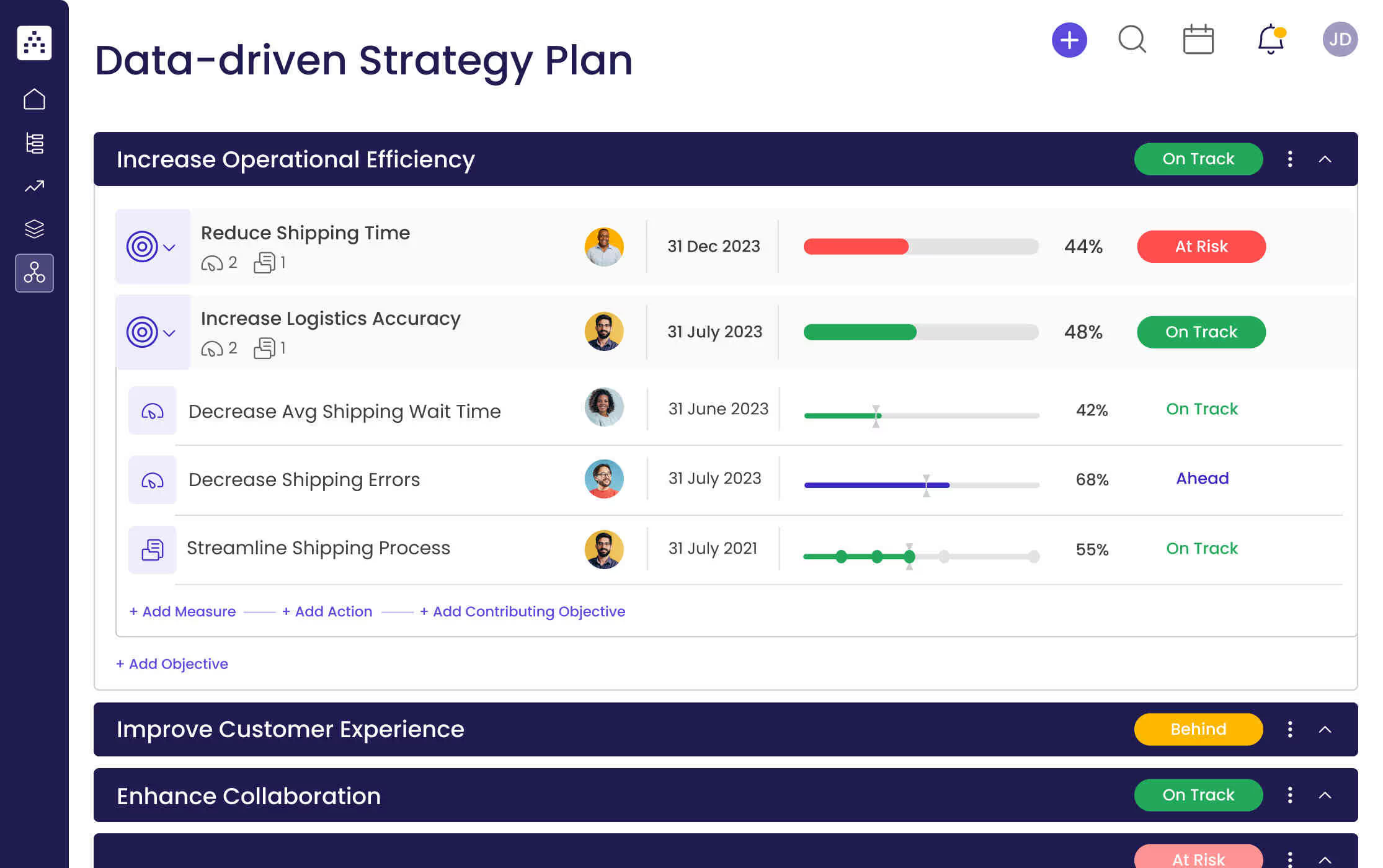What is a Data-driven Strategy Plan?
A data-driven strategy plan is a framework used to identify, measure, and track key performance indicators (KPIs) that are essential to achieving organizational objectives. By relying on data-driven insights, decision-makers can create plans that are tailored to their individual business needs and objectives. This type of strategy plan allows organizations to stay agile and adjust their plans as needed to ensure maximum efficiency.
What's included in this Data-driven Strategy Plan template?
- 3 focus areas
- 6 objectives
- 6 projects
- 6 KPIs
Each focus area has its own objectives, projects, and KPIs to ensure that the strategy is comprehensive and effective.
Who is the Data-driven Strategy Plan template for?
This data-driven strategy plan template is designed for data analysts, business intelligence teams, and executives who want to create a strategy plan that relies on data insights to drive business decisions. The template provides a structure for identifying focus areas, objectives, and related projects that will help organizations achieve their goals.
1. Define clear examples of your focus areas
A focus area is an umbrella term for the main goal or challenge that an organization is trying to address. Examples of focus areas could include increasing operational efficiency, improving customer experience, or enhancing collaboration. It is important to clearly define your focus areas in order to provide a framework for the rest of the strategy plan.
2. Think about the objectives that could fall under that focus area
Once you have identified your focus areas, you can begin to think about the objectives that could fall under that focus area. An objective is a specific goal or outcome that is related to the focus area. Objectives should be measurable and actionable so that you can track progress towards achieving your goals.
Examples of some objectives for the focus area of Increase Operational Efficiency could be: Reduce Shipping Time, and Increase Logistics Accuracy.
3. Set measurable targets (KPIs) to tackle the objective
Once you have identified your objectives, you can begin to set measurable targets or key performance indicators (KPIs) to tackle the objective. KPIs are specific metrics that are used to measure progress towards achieving a goal. Setting measurable targets will help you track your progress and determine if changes need to be made to increase efficiency.
An example of a KPI for the focus area of Increase Operational Efficiency could be: Decrease Avg Shipping Wait Time by 20%.
4. Implement related projects to achieve the KPIs
Once you have identified your KPIs, you can begin to implement related projects to achieve them. A project, or action, is a specific initiative that is designed to help you reach your KPIs. Projects should be measurable and actionable, and should have a set timeline and resources allocated to them.
An example of a project related to Increase Operational Efficiency could be: Streamline Shipping Process.
5. Utilize Cascade Strategy Execution Platform to see faster results from your strategy
The Cascade Strategy Execution Platform is an easy-to-use platform that allows you to track and monitor your strategy plan. With the Cascade platform, you can easily track progress, measure success, and make adjustments to ensure maximum efficiency and faster results from your strategy plan.


